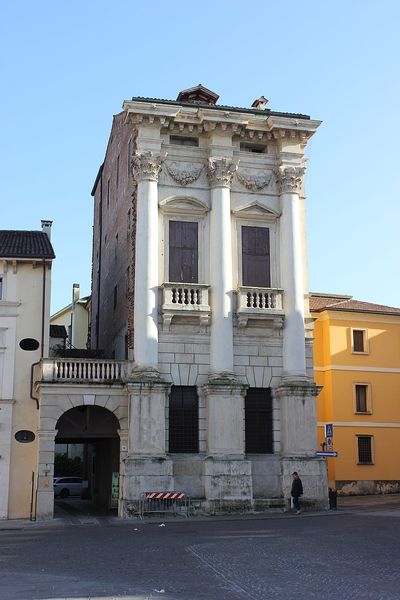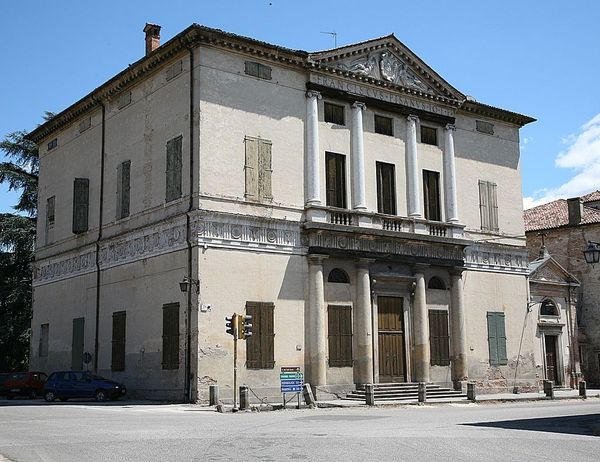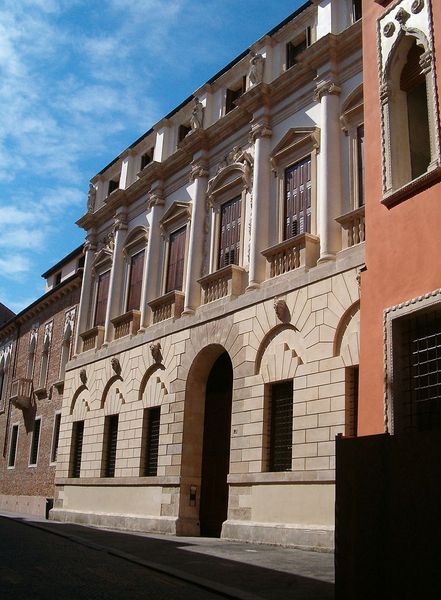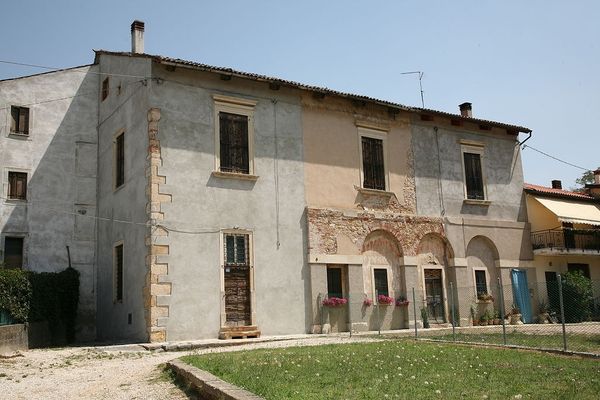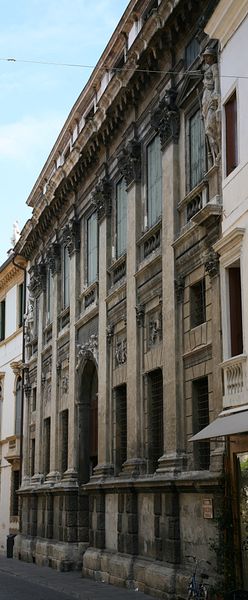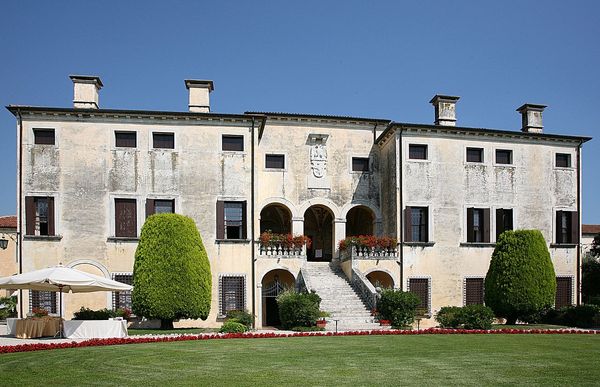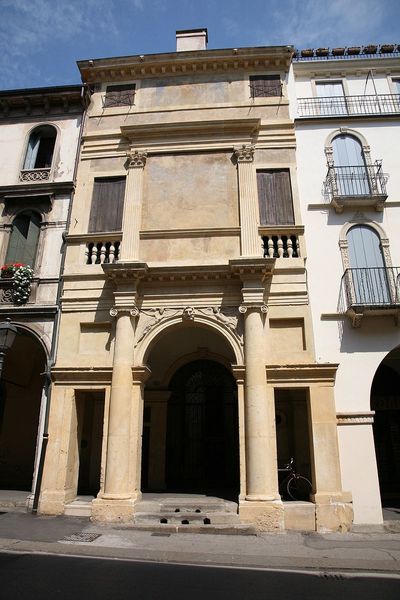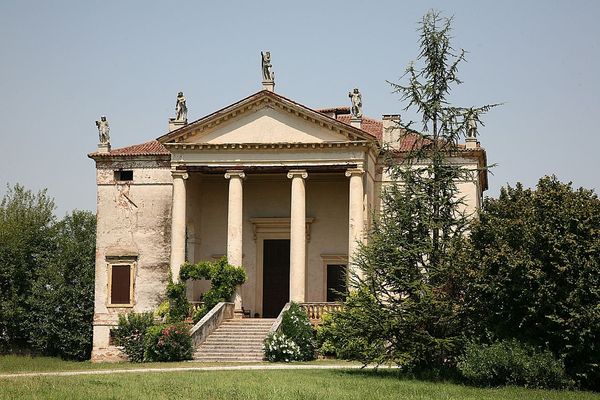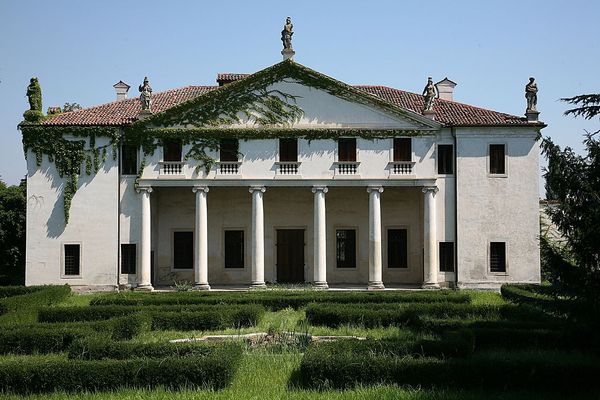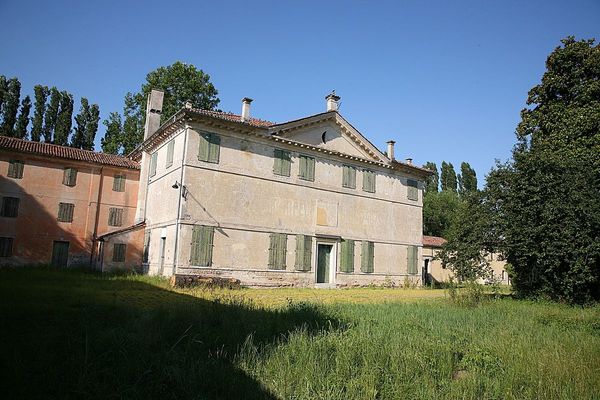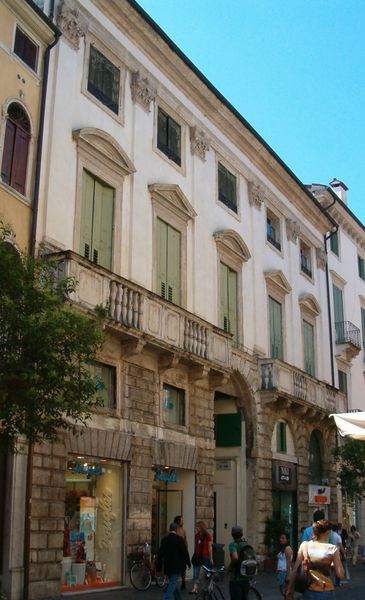
site-specific, architecture
#
public art
#
landscape
#
architectural photography
#
historic architecture
#
classicism
#
site-specific
#
italian-renaissance
#
architecture photography
#
architecture
#
historical building
Copyright: Public domain
Editor: Here we have Andrea Palladio's Villa Trissino, Cricoli, built around 1535. Looking at it, the building’s facade gives me a feeling of understated elegance; how interesting is this combination of materials and composition? What are your thoughts when you look at this? Curator: What strikes me is how Palladio’s understanding of materials and labor practices is reshaping aristocratic identity here. Notice the rusticated stonework—it's not just decorative. It's a conscious aesthetic choice meant to highlight the labor involved in quarrying and shaping the stones, which can make us think about the cultural context of its construction. Editor: How so? Curator: Well, Italian Renaissance architecture, even while looking to antiquity, was all about demonstrating power and control. By foregrounding the process of construction through raw materiality, Palladio invites us to consider the workers, the local economies, and the material realities that undergird this visual opulence, instead of taking it at face value. It breaks down traditional boundaries between high art and craft. Think about how those roof tiles were made, fired, transported! Editor: That's a perspective I hadn't considered. The towers initially seemed just for show, but now I’m seeing them as structures connected to land ownership and production, because you mention the material reality, and local economies, I mean... brick making process, who would own those furnaces at that time, that’s very intriguing. Curator: Exactly! Consider the accessibility of materials. Palladio skillfully manipulated relatively common resources into an aesthetically impressive and socially meaningful dwelling. This shows us how the means of artistic production impact social relations, and artistic movements that occur within. Editor: Thanks, I really appreciate this way of analysing materiality! It’s fascinating how examining the means of production gives the construction such cultural context. Curator: I think so too.
Comments
No comments
Be the first to comment and join the conversation on the ultimate creative platform.
